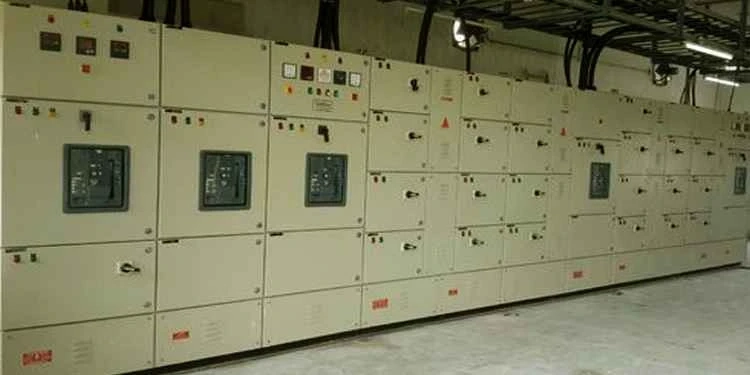Everything About Distribution Boards – Uses, Types & Safety Tips
A distribution board is a device that is used to distribute electrical power throughout a building or facility. It is also known as a breaker panel, electrical panel, or fuse box. It consists of a series of circuit breakers or fuses that are used to control the flow of electricity to various circuits within the building.See Also: Main Distribution Boards1. Uses of Distribution Boards
There are several uses for distribution boards in buildings and facilities:
To distribute electrical power throughout a building or facility: Distribution boards are used to distribute electricity from the main power supply to various circuits within the building.
To control the flow of electricity: Distribution boards contain circuit breakers or fuses that can be used to control the flow of electricity to specific circuits. This allows for individual circuits to be turned on or off as needed and also helps to protect against electrical overloads.
To distribute power to specific areas or circuits: Sub-distribution boards are used to distribute electricity to specific areas or circuits within a building, such as a particular floor or wing.
To provide temporary power: Temporary distribution boards are portable distribution boards that are used on construction sites or for temporary power needs.
To control motors: Motor control centers are distribution boards that are used to control the electrical power supply to motors, such as those used in HVAC systems or industrial equipment.
2. Types of Distribution Boards
There are several types of distribution boards, including:
Main distribution boards: These are typically located in a central location, such as a utility room or basement, and are used to distribute electricity to various circuits throughout the building.
Sub-distribution boards: These are smaller distribution boards that are used to distribute electricity to specific areas or circuits within the building, such as a particular floor or wing.
Temporary distribution boards: These are portable distribution boards that are used on construction sites or for temporary power needs.
Motor control centers: These are distribution boards that are used to control the electrical power supply to motors, such as those used in HVAC systems or industrial equipment.
Surface-mounted distribution boards: These are distribution boards that are mounted on the surface of a wall or other surface.
Flush-mounted distribution boards: These are distribution boards that are installed flush with the surface of a wall or other surface.
Cabinet-style distribution boards: These are distribution boards that are enclosed in a cabinet or enclosure for added protection.
Busbar distribution boards: These are distribution boards that use a busbar, a conductor made of copper or aluminum, to distribute electricity to various circuits.
Modular distribution boards: These are distribution boards that are made up of individual modules that can be added or removed as needed.
Custom distribution boards: These are distribution boards that are designed and built to meet specific needs or requirements.
3. Components of Distribution Boards
The main components of a distribution board include:
Circuit breakers or fuses: These are used to control the flow of electricity to specific circuits and to protect against electrical overloads.
Busbars: These are conductors made of copper or aluminum that are used to distribute electricity to various circuits.
Wiring: The distribution board includes a series of wires that connect the various components and circuits within the building.
Circuit labels: These are used to identify the various circuits and their purposes, such as lighting or outlets.
Enclosure: The distribution board is typically enclosed in a cabinet or enclosure to protect the components and prevent unauthorized access.
Main switch: This is a large switch that is used to turn off the power to the entire distribution board.
Neutral and earth bars: These are used to connect the neutral and earth wires from the incoming power supply to the distribution board.
Surge protection devices: These are used to protect against electrical surges and protect the distribution board and circuits from damage.
Metering equipment: This may include a meter or other device that is used to measure the amount of electricity being used by the building or facility.
Grounding rods: These are used to provide a ground connection for the distribution board and to help protect against electrical shocks.
4. Safety Tips When Using Distribution Boards
There are several safety tips to keep in mind when working with distribution boards:
Always make sure the power is off before working on a distribution board. This can be done by switching off the main power switch or by unplugging the power supply.
Use caution when handling live electrical wires and components. Wear protective gear, such as gloves and safety glasses, and avoid touching live wires or components with your bare hands.
Follow proper procedures for replacing circuit breakers or fuses. Make sure to turn off the power and use the correct type and size of breaker or fuse for the circuit.
Never exceed the rated capacity of the distribution board. Overloading the distribution board can cause damage and increase the risk of electrical fires.
Regularly inspect and maintain the distribution board to ensure it is in good working order. This includes checking for loose connections, damaged components, and other issues.
Only allow qualified and trained personnel to work on the distribution board. Electrical work can be dangerous and should only be performed by individuals with the necessary knowledge and skills.
Keep the distribution board and surrounding area clean and free of clutter to reduce the risk of accidents and injuries.
Use surge protection devices to protect against electrical surges and protect the distribution board and circuits from damage.
Follow all local and national electrical codes and regulations when working with distribution boards.


